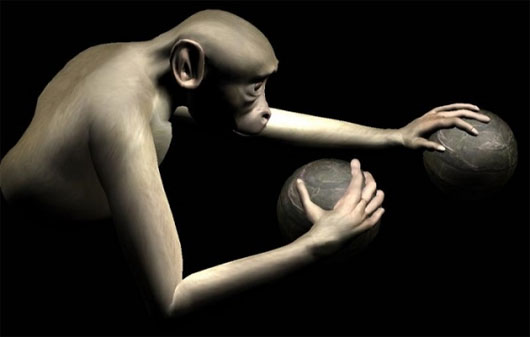Give monkeys a virtual model and improve prosthetics in the disabled
The hope for those who have lost two-handed mobility has recently been rekindled when many research institutes have begun to develop artificial hands that can be controlled by thought.
Until now, all such systems only allow the driver to control a single hand and for many of the activities that we do on a daily basis this is not enough. However, in the future, prosthetic systems may be improved by an experiment on monkeys. More recently, researchers at Duke University, North Carolina, have succeeded in making two brown monkeys manipulate two hands of a representative model on the computer at the same time.
The team, led by neurobiology doctor Miguel Nicolelis, started by observing the activity of nearly 500 neurons in the two hemispheres of two monkeys. One of the two monkeys is taught how to use the hand to control the physical knob to move the arm of a virtual monkey on the computer screen. After that, this monkey continued to be trained to control the two virtual arms of the character on the screen by moving two hands without the control knob. Finally, the researchers tied the monkey hands and showed it to control with thought. A computer will decode the monkey's neural activity and perform motion compatible with 2 virtual arms.

Virtual models on computers
The second monkey will constantly monitor the behavior performed by the virtual model and then perform a brain test to control two virtual arms directly without going through the same steps as the first monkey. This is especially important for human applications because most users are incapable of getting started with practicing with the actual movements of the arm.
Once the monkeys were used to using the brain to manipulate the virtual model, the researchers realized that their cortical region became more flexible. They suggested that the monkeys combined the virtual arm on the screen into their body image or in other words, they thought that the virtual arms were the real arm.
In addition, the team also found that when monkeys perform two-handed activity, the corresponding neural activity is not simply the commanding action for the right or left hand alone. According to them, there is something that works when both arms are used at the same time and this may open the opportunity to develop more advanced thought-driven prosthetics.
The Duke University study was published in the journal Science Translational Medicin e. All these findings will be used in the Walk Again project - a collaborative effort to develop an exoskeleton that supports disabled people that can be controlled by the brain.
- Titanium alloy footprints help disabled cats travel
- Play games with thoughts
- Use virtual earthquakes to predict Los Angeles scenarios
- Embryo fossils
- 2,200-year-old prosthesis in a tomb in China
- Monkey also drank alcohol
- Japan invents a device that helps you eat food
- Video: The way to flirt with a strange capuchin monkey
- Give a virtual gift of 1 USD to become a fashion
- Monkey can identify himself in the mirror
- Strange things about monkeys
- Monkeys have the most funny faces
 Green tea cleans teeth better than mouthwash?
Green tea cleans teeth better than mouthwash? Death kiss: This is why you should not let anyone kiss your baby's lips
Death kiss: This is why you should not let anyone kiss your baby's lips What is salmonellosis?
What is salmonellosis? Caution should be exercised when using aloe vera through eating and drinking
Caution should be exercised when using aloe vera through eating and drinking